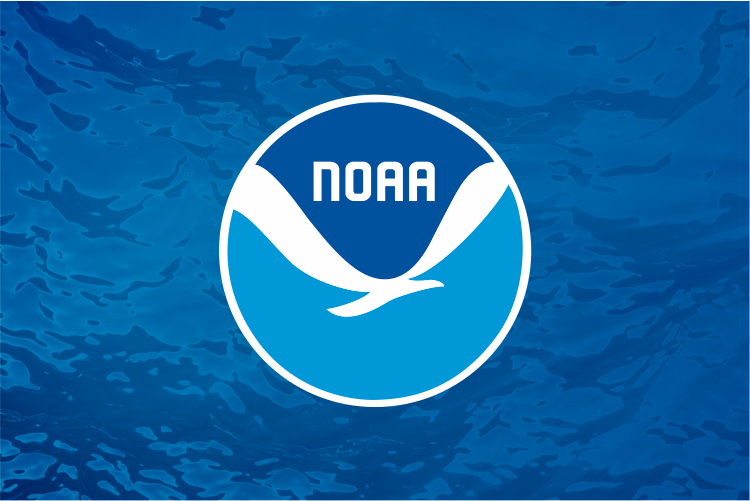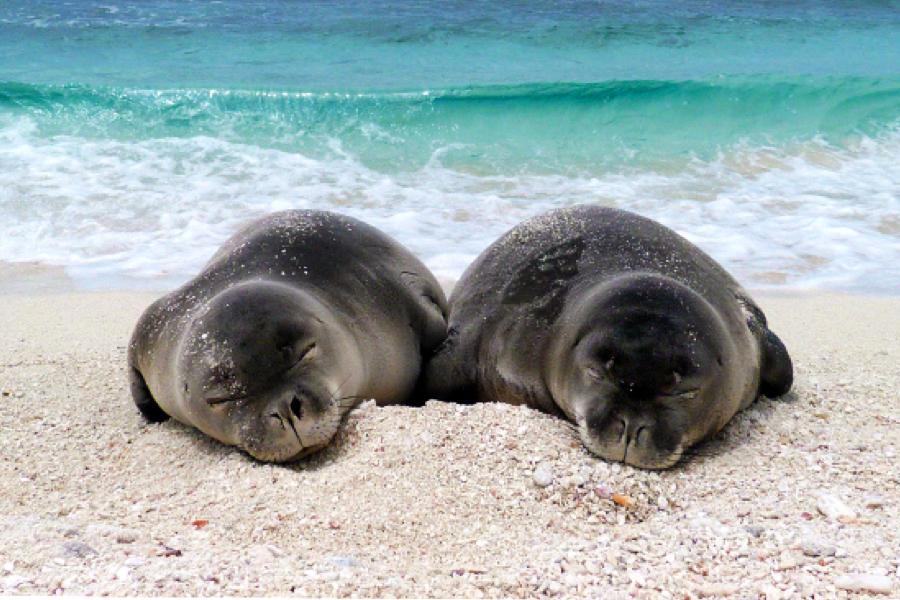Resources for Fishing
Resources for Fishing
NOAA Fisheries works in partnership with regional fishery management councils to manage fisheries in federal waters, which typically span 3 to 200 nautical miles from shore. Rules and requirements vary by fishing type, area, marine species, and gear type.
In general, fisheries rulemaking, permitting, and other management activities are led by our five regional offices.

Regional Fisheries Resources
Each region has specific resources for permits, rules, regulations, reporting requirements, landings, and other fishery topics.
Featured News

 Recreational fishermen celebrate National Fishing and Boating Week. Credit: NOAA Fisheries
Recreational fishermen celebrate National Fishing and Boating Week. Credit: NOAA Fisheries
 View of marina in Petersburg, Alaska. Credit: Marysia Szymkowiak/NOAA Fisheries
View of marina in Petersburg, Alaska. Credit: Marysia Szymkowiak/NOAA Fisheries
8.5 million recreational anglers
In 2018, 8.5 million anglers took 194 million trips.
9.3 billion pounds of seafood
In 2019, U.S. commercial fishermen landed 9.3 billion pounds of seafood valued at $5.5 billion.
194 million recreational fishing trips
In 2018, 8.5 million recreational saltwater anglers took 194 million saltwater fishing trips around the United States. The number of trips taken (or effort) is an important measurement used by our program to determine total catch estimates each year.
47 stocks rebuilt since 2000
NOAA Fisheries manages 461 stocks or stock complexes in 46 fishery management plans.
1.7 million jobs and $253 billion in sales
We monitor, protect, and sustainably manage the nation’s fisheries, which generated $253 billion in sales impacts and created 1.7 million jobs in the U.S. marine fishing sector and across the broader economy in 2020.
Permits & Forms
There are a variety of permitting requirements associated with fishing in federal waters. Find permit information for commercial fishermen, recreational fishermen, for-hire fishing, seafood dealers, and seafood traders.
Rules & Regulations
Find current rule-making actions—the latest notices and proposed rules open for comment, as well as final rules for various fishery management plans and related amendments.
Atlantic Highly Migratory Species
Atlantic highly migratory species are very popular with saltwater anglers. These fish live throughout the Atlantic Ocean, Gulf of Mexico, and Caribbean waters and include tuna, sharks, swordfish, and billfish.
Regional Fishery Management Councils
The MSA created eight regional fishery management councils responsible for the fisheries in their region that require conservation and management. The councils develop and amend fishery management plans, set annual catch limits, develop research priorities, implement rebuilding plans, and conduct public meetings.
Commercial Fishing
Commercial fishing regulations and requirements in federal waters can vary by area, marine species, and gear type. Find region-specific tools and resources:
- Alaska
- New England/Mid-Atlantic
- Pacific Islands
- Southeast (including the Gulf of Mexico and Caribbean)
- West Coast
If a fish species is managed through both state and federal regulations, federally permitted commercial fishermen must follow the more restrictive regulations regardless of where they are operating.
Commercial fishermen operating in state waters must follow rules and requirements set by the state or U.S. territory.
Federal Commercial Fishing Permits
Our regional offices issue most federal commercial fishing permits. Commercial fishing vessels may need multiple federal permits or a combination of federal and state permits to participate in various fisheries. Many federal commercial fishing permits can be acquired or renewed online.
- Atlantic Highly Migratory Species Permit Shop*
- eFISH (Alaska)
- FishOnline (New England/Mid-Atlantic)
- Southeast Fisheries Permit System (renewals only)
*Some Atlantic HMS permits are issued by our Greater Atlantic or Southeast regional offices. Learn where to apply in the permit descriptions.
All commercial fishing permits
Commercial Fisheries Landings
Our commercial landings database allows visitors to build custom landings reports of non-confidential data. The data is organized by fishing type, year, region, state, and marine species.
The data presented in this database may not match the data in published versions of Fisheries of the United States or in other online landings queries. Visit the database for details.
Fishery Management Plans, Rules, and Regulations
Most federal fishing regulations come from fishery management plans. Under the Magnuson-Stevens Act, every fishery requiring conservation and management must have a fishery management plan. The plans describe problems in the fishery and identify management measures to protect, restore, and promote its long-term health.
In general, fishery management plans are developed and amended by one of eight regional fishery management councils. In addition, NOAA Fisheries is directly responsible for the management of Atlantic highly migratory species.
Search for rules and regulations in effect and find fishery rulemaking actions open for comment:
- All fishery management plans and amendments
- Commercial fishing notices and rules
- Commercial rulemaking open for comment
- All fishery bulletins
Commercial Fishing Management Actions Being Considered
Visit the regional fishery management council websites to learn about and provide feedback on federal fishery management actions and alternatives under consideration:
You can also provide feedback on measures affecting Atlantic highly migratory species managed directly by NOAA Fisheries. You can attend scoping or Atlantic Highly Migratory Species Advisory Panel meetings or submit comments to the Atlantic Highly Migratory Species Management Division.
Recreational Fishing

Do I Need a Recreational Fishing Permit or License?
State Fishing Regulations and Licenses
If you are fishing in state waters (generally 0 to 3 nautical miles off shore), contact your state fish and wildlife agency for a recreational fishing license.
Find state fishing regulations and licenses
Federal Fishing Permits
Since January 1, 2011, a saltwater recreational fishing license or registration from any state or U.S. territory except Hawaii, Puerto Rico, or the U.S. Virgin Islands, automatically registers you in the National Saltwater Angler Registry and you do not need to take further action. Otherwise, please visit the registry to ensure you are registered. If you plan on fishing anywhere for highly migratory species—such as tunas and billfish—or for bottomfish in Hawaii, check out the links below to get the permits you need.
Atlantic highly migratory species permits
Hawaiian Islands bottomfish permit

Where Can I Fish?
Anglers on the Atlantic and Gulf coasts can use our comprehensive, online database of public recreational fishing sites from Maine through Mississippi and Puerto Rico. Use the “Guest Login” button to browse recreational access points—and the amenities at each location—in your state.
Search public recreational fishing sites
Fishing in National Marine Sanctuaries

What Can I Catch in Federal Waters?
The eight regional fishery management councils establish specific management measures (such as fishing seasons, size limits, and bag limits) based on the best available science, which are then implemented by NOAA Fisheries. Be sure to review the recreational fishing regulations for the region you are fishing in.
American Samoa Federal Fishing Regulations
Alaska Federal Recreational Fishing Regulations
Atlantic Highly Migratory Species Recreational Fishing Compliance Guide
Caribbean Federal Recreational Fishing Regulations (PDF, 14 pages)
Greater Atlantic Federal Recreational Fishing Regulations
Guam Federal Fishing Regulations (PDF, 22 pages)
Gulf of Mexico Federal Recreational Fishing Regulations
Northern Mariana Islands Federal Fishing Regulations
South Atlantic Federal Recreational Fishing Regulations
Federal Fishing Rules & Regulations
In partnership with the regional fishery management councils, interstate marine fisheries commissions, international fisheries management organizations, and under the guidance of the Magnuson Stevens Conservation and Management Act, NOAA Fisheries plays a key role in the implementation and enforcement of federal fishery rules and regulations in the U.S. Exclusive Economic Zone (3 to 200 nautical miles off shore).
Find recreational and non-commercial fishing rules and regulations

What Responsible Fishing Practices Should I Follow?
Learn what you can do to be a responsible steward of our ocean resources.
- Catch and release
- Seabird release
- Fishing tips to protect sea turtles and marine mammals
- Fishing around sea turtles

How Can I Get Involved?
Find out how you can get involved in monitoring the health of our oceans and fish resources.
- Bycatch Reduction Engineering Program
- Cooperative Research Program
- National Fish and Wildlife Foundation
- Saltonstall-Kennedy Grant Program
- Shark Tagging
Other Resources
Subsistence Fishing
Alaska: Subsistence Fishing Regulations

Subsistence halibut is halibut caught by an eligible rural resident or a member of an eligible Alaska Native tribe for direct personal or family consumption as food, sharing for personal or family consumption as food, or customary trade. Before fishing under the Alaska subsistence fishing halibut regulations, fishermen must obtain a Subsistence Halibut Registration Certificate.
Learn more about subsistence fishing in Alaska
Pacific Islands: Non-Commercial Fishing

NOAA Fisheries recognizes the fundamental role that non-commercial and recreational fishing plays in the livelihoods of Pacific Islanders. We work alongside fishermen, partners, and others to conserve fish populations and protect our unique fishing traditions.
Learn more about non-commercial fishing in the Pacific Islands
West Coast: Tribal Fishing

Many Pacific Northwest Indian tribes have treaties reserving their right to fish in “Usual and Accustomed” fishing places and include many species in addition to salmon and steelhead. These tribes are co-managers of the fishery resource in partnership with the states and federal government.
Fisheries by Region
NOAA Fisheries helps maintain the health and sustainability of our nation's fisheries through five regional offices and six science centers. Use the links below to find regionally specific:
- Rules and regulations
- Permits and licenses
- Online resources
- Other important tools for fisheries in your region
Alaska

New England/Mid-Atlantic
Pacific Islands

Southeast

West Coast






